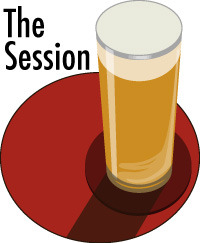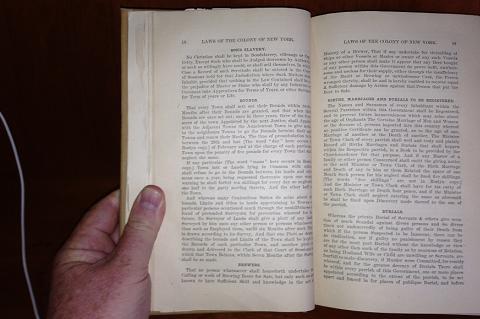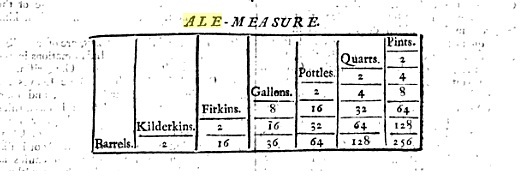 This month’s edition of The Session is about women and beer which, if you think about it, represents 50% of everything in our beery culture. Sure it does – as long as you have your methodology correctly aligned. So, there should be a wide range of topics. For me, I noticed a few things along the way as Jordan and I have been researching and writing the history of brewing in Ontario and especially things prior to 1860 that are well worth sharing. Why 1860? Temperance and trains, of course. The whole society changes when trains and temperance get a major foothold.
This month’s edition of The Session is about women and beer which, if you think about it, represents 50% of everything in our beery culture. Sure it does – as long as you have your methodology correctly aligned. So, there should be a wide range of topics. For me, I noticed a few things along the way as Jordan and I have been researching and writing the history of brewing in Ontario and especially things prior to 1860 that are well worth sharing. Why 1860? Temperance and trains, of course. The whole society changes when trains and temperance get a major foothold.
The thing is that – before temperance and trains – beer seems to be a townie drink, a drink that you get when you are within reach of a brewery or a transit point. Consider this as you consider that, as set out in the Oxford Symposium on Food and Cookery 1991: Public Eating Proceedings, in the chapter “Temperance Hotels and those ‘Damned Cold Water Drinking Societies’” Powers and Duncan describe at page 238 how Catherine Parr Trail:
… gave advice to immigrants in 1852 and included recipes for making beer, noting the absence of the ‘sweet well flavoured home brewed beer of the English farmhouses. Unfortunately, she said, “the taste for beer has often unhappily been superceded by that of whiskey.’ She provided recipes for treacle beer, beet beer and maple beer as an alternative to whiskey.
See, once you get anywhere away from town and a cartloads of hooch is heading your way, it is going to have the most concentrated form of the stuff on it unless there is a compelling reason not to do that. And until trains and temperance push to the forefront, there just isn’t a reason. And see Parr Trail missed the “sweet well-flavoured home brewed beer of the English farmhouse”? This backs another thing we suspect: that there was not a lot of surplus barley floating around Upper Canada even well into the middle third of the 1800s. One farmer interviewed in his old age recollected that he didn’t even see barley until he was in this twenties in the early 1840s. Which leads to beet beer on the frontier. You do what you can.
So, what was the place of women in such a culture. Fortunately, I have my copy of In Mixed Company by Julia Roberts reviewed back here in 2010. Roberts has a chapter in her book entitled “Public Life for Women in the Era of Separate Spheres” which discusses the experience of women in Upper Canadian taverns. And I have a handy copy of Wives and Mothers, School Mistresses and Scullery Maids: Working Women in Upper Canada 1790-1840 by Elizabeth Jane Errington, a historian who I have had the pleasure of meeting. Errington’s books has quite a number of observations of the intersection of women and alcohol in the colony during that period.
And what do we learn? One thing is that women were present in taverns as daughters, wives and widows working under or as licensee but also as travelers stopping at the inn and even local drinkers. Roberts indicates that as early as the 1830s inns were advertising special separate provisions for female customers. These provisions were further divided by class and included separate entrances, parlors and waiting rooms as well as balconies. And in some cases they are recorded as drinking alcohol including beer:
At Robinson’s tavern in Prescott, “Sarah” charged half a pint of beer in 1844… Widow Wilson lodged at Robinson’s for two and ah half weeks starting 31 October 1847. On her first day, she charged a glass of whisky, a glass of brandy and several pints of beer. She then stuck to beer and her tally on the last day of her stay was fifty-six pints, an average of three pints a day. Treating others accounted for part of the total.
As the title indicates, Errington’s book focuses on the working life of women. She notes that even when a couple ran a tavern together, as noted by one traveler in 1797, the husband ran the farm while the wife ran the tavern. As the post-Revolution economy evolved, wives were less involved in maid’s work and more often acted as hostesses especially in more established hotels. On the frontier, however, things were not as genteel. Errington quotes from Susanna Moodie on the preparations for a work bee when neighbours came to achieve some collective goal:
…our men worked well until dinner time, when, after washing in the lake they all sat down to the rude board which I had prepared for them, loaded up with the best fare that could be procured in the bush. Pea soup, legs of pork, venison, eel, and raspberry pie, garnished with plenty of potatoes and whisky to wash them down, besides a large iron kettle of tea.
Women and beer? Before the rise of temperance as a political force to be heeded and before the train when barrels of beer could be gotten in as far as the rail line went, it was a townie thing in Upper Canada. And women were there as they were everywhere.



